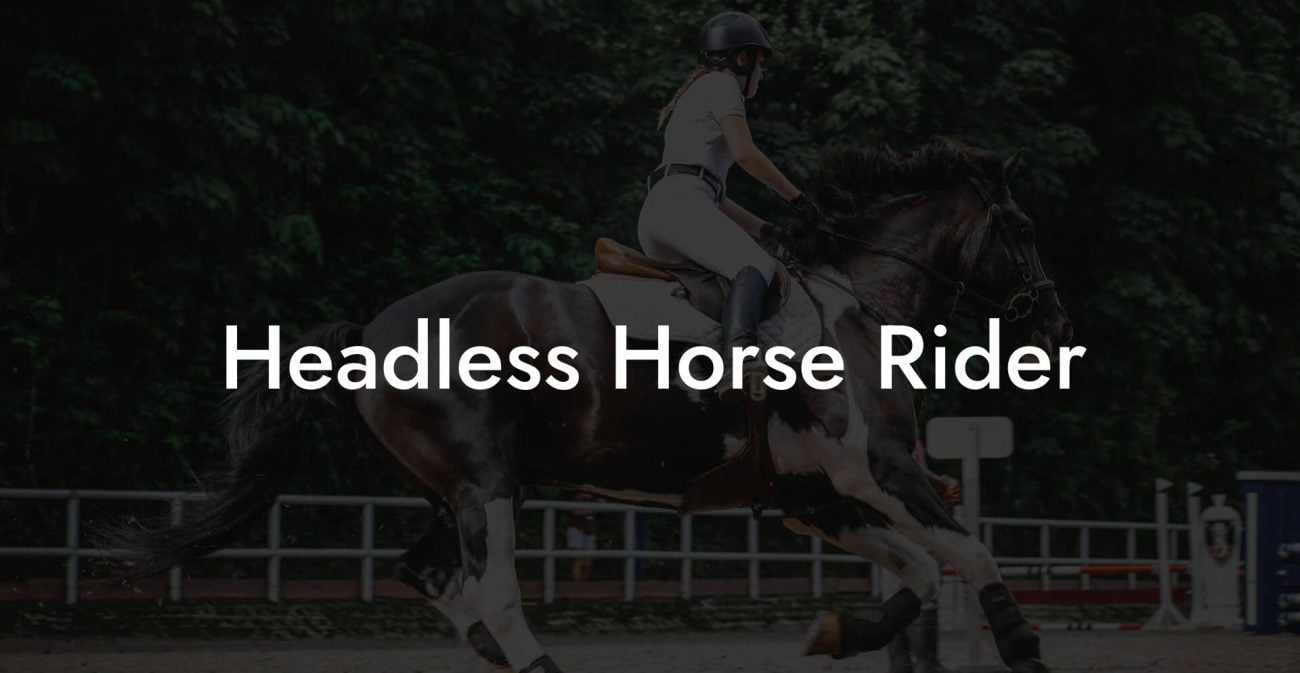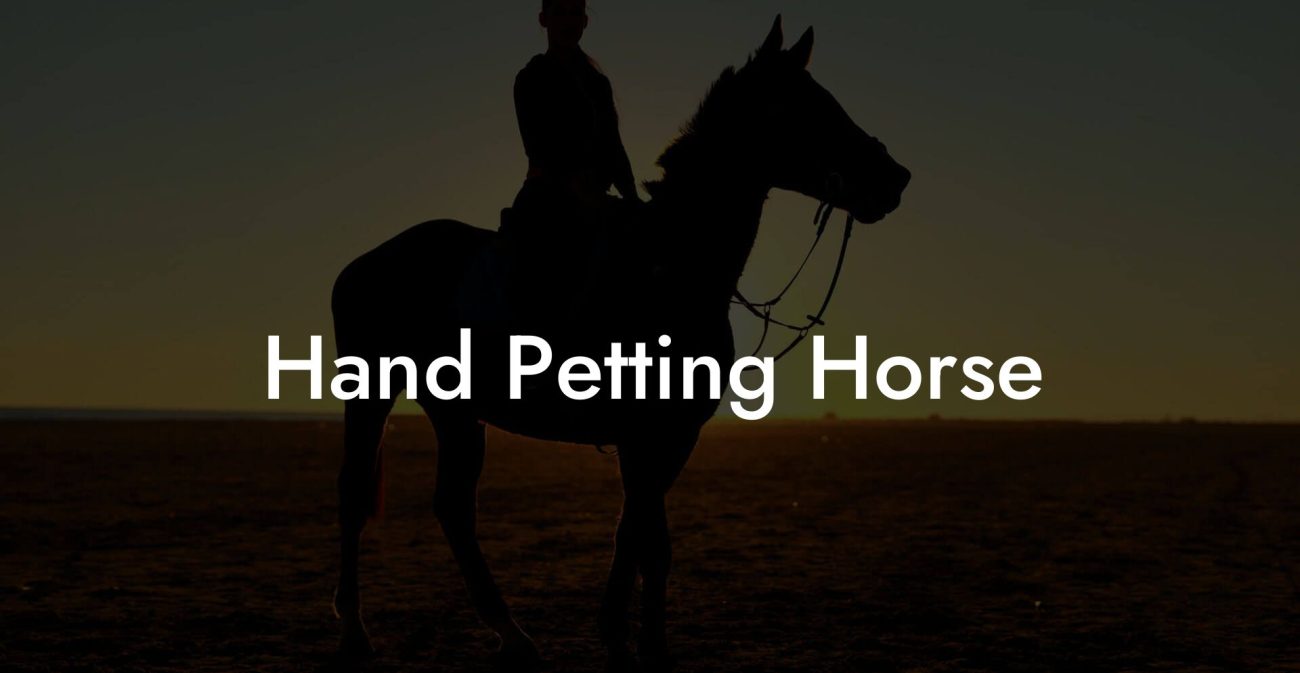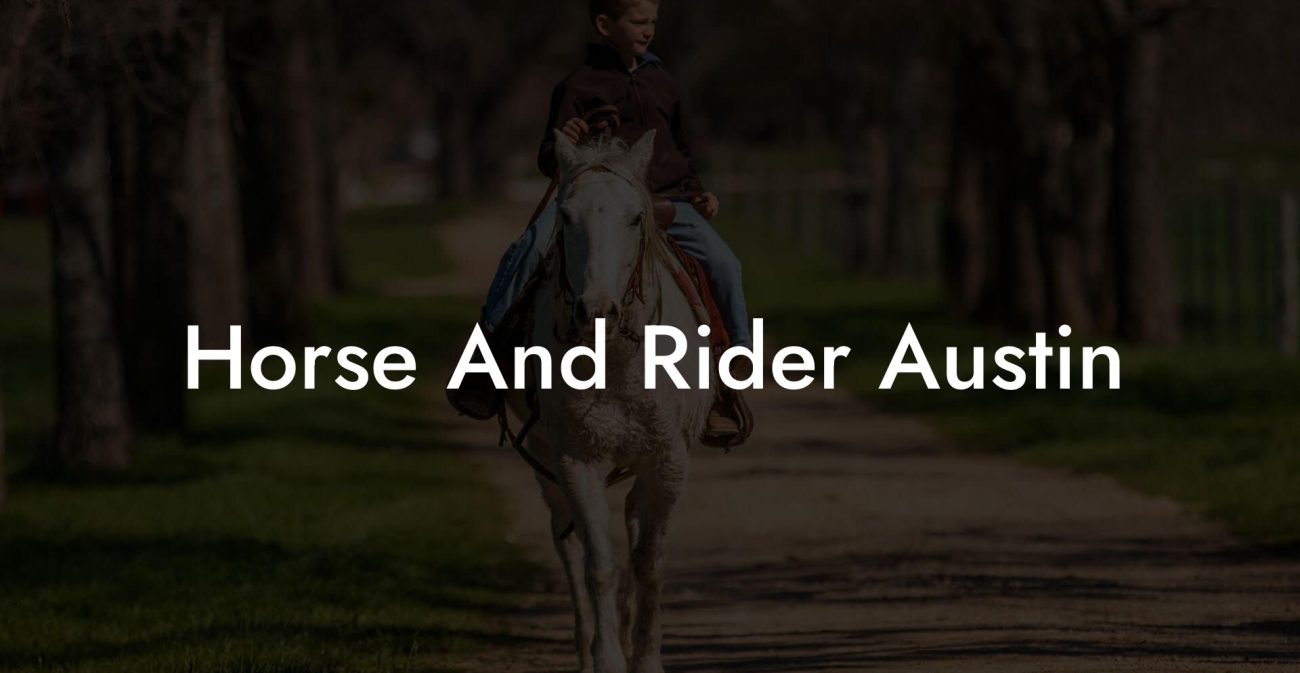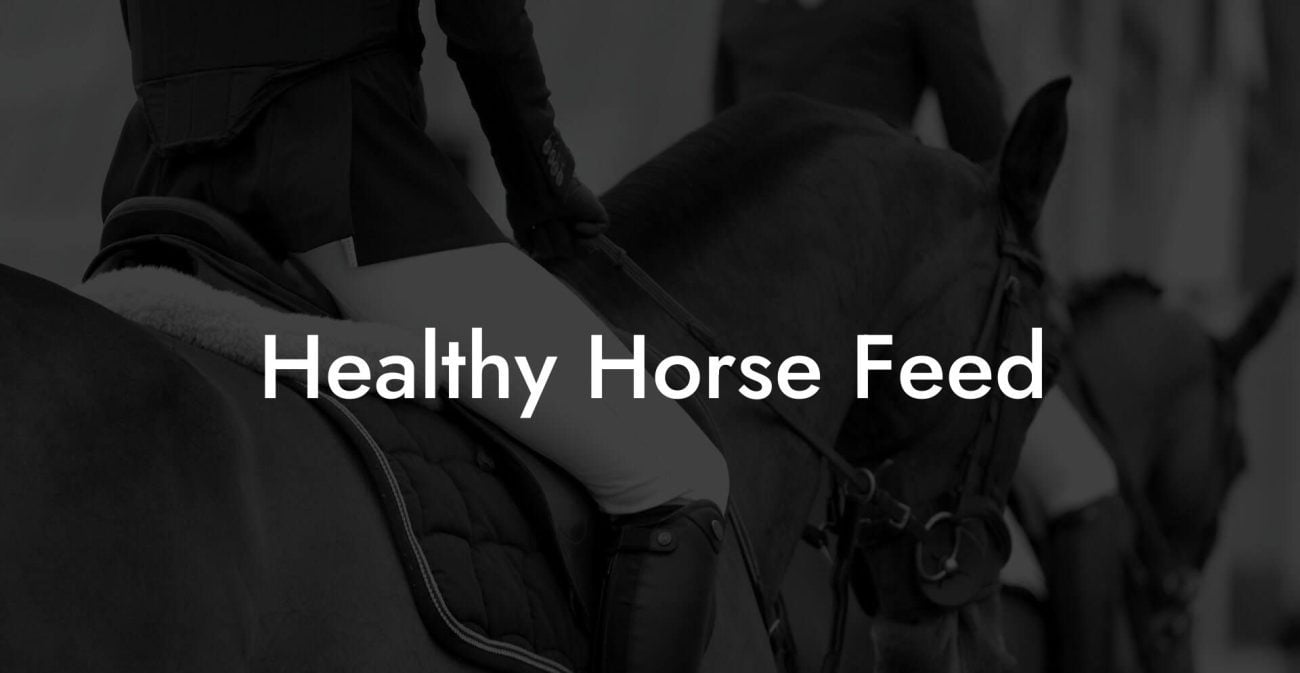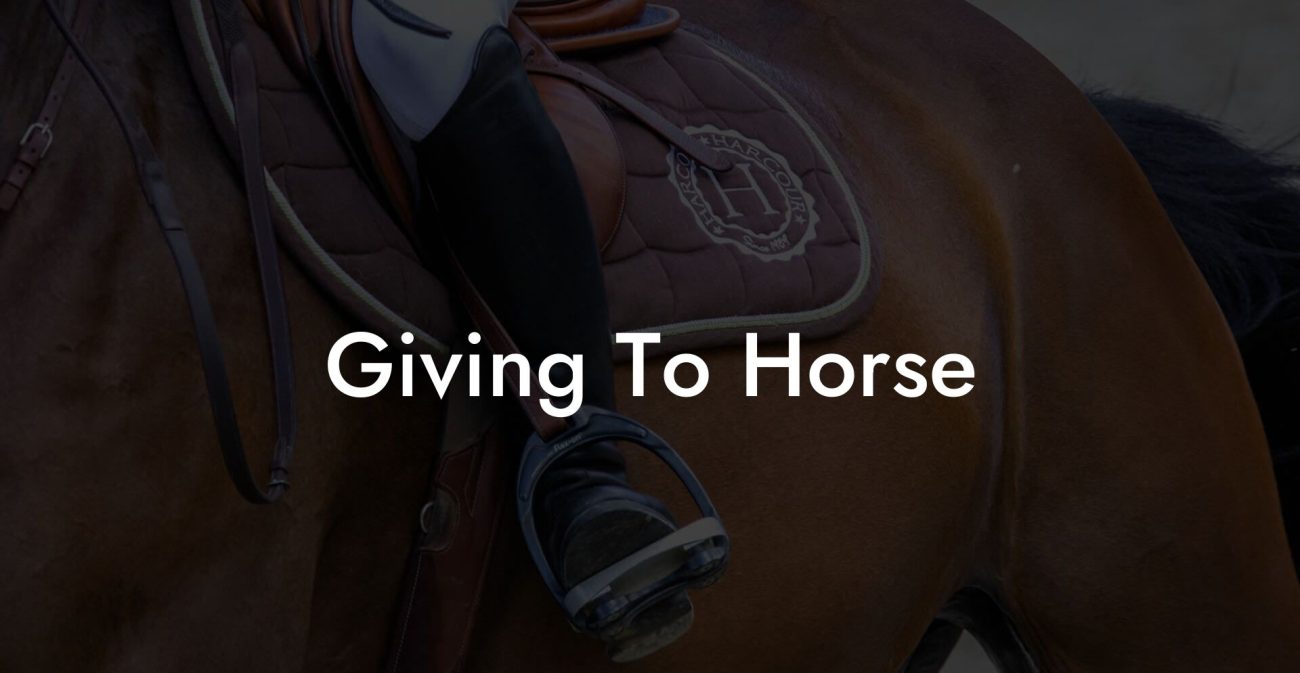There’s nothing quite as jaw-dropping as watching your majestic steed suddenly limp, muscles tense, as if caught in an intense, unwelcome dance, yes, we’re talking about when a horse "ties up." It’s a perplexing, sometimes terrifying event for any horse lover and owner, leaving you scrambling through your mental Rolodex of equine knowledge. So, what does it mean when a horse ties up, and how can you keep your four-legged friend prancing freely? Let’s dive into this topic with a fresh, no-nonsense vibe that cuts through the jargon and gives you exactly what you need to know.
Quick Links to Useful Sections
- Understanding the Equine Emergency: What Does Tying Up Even Mean?
- The Anatomy and Physiology Behind Tying Up
- Trigger Points: What Causes a Horse to Tie Up?
- Recognizing the Signs of a Horse Tying Up
- Immediate Steps to Take When Your Horse Ties Up
- Diagnosis and Veterinary Care: Getting to the Root of the Issue
- Treatment Options: Traditional and Integrative Equine Therapies
- Conventional Medical Treatments
- Integrative Equine Therapies
- Preventing Tying Up: Best Practices for Equine Care and Maintenance
- 1. Tailor the Exercise Regimen
- 2. Monitor Diet and Hydration
- 3. Maintain Regular Veterinary Check-Ups
- 4. Optimize the Environment
- 5. Consider Regular Massage and Stretching
- nutrition and Supplements: Fueling Better Muscle Health
- Case Studies: Real-Life Stories of Horses Who Overcame Tying Up
- Case Study 1: Thunder’s Comeback
- Case Study 2: Bella’s Battle with Stress
- Case Study 3: Rocky’s Dietary Dilemma
- Integrative and Alternative Approaches in Equine Therapy
- Acupuncture and Energy Healing
- Herbal Remedies and Nutraceuticals
- Massage Therapy and Bodywork
- Resources and Community Support: Your Next Steps
- Crafting a Long-Term Equine Care Strategy
- Step 1: Early Diagnosis and Continuous Monitoring
- Step 2: Customize the Exercise and Recovery Plan
- Step 3: Nutritional Balancing Act
- Step 4: Integrative Therapy Support
- Step 5: Education and Community Engagement
- Integrative Equine Therapy and Cutting-Edge Research
- Frequently Asked Questions About Tying Up in Horses
- Your Journey to Empowered Equine Care and Resilient Muscle Health
Understanding the Equine Emergency: What Does Tying Up Even Mean?
When a horse “ties up,” it isn’t literally tying a knot in its muscles, thankfully, otherwise, stables would need extra-long scissors! The term refers to a condition known medically as "exertional rhabdomyolysis," or ER, where a horse suffers from severe muscle pain, stiffness, and sometimes even cramping that can limit movement. In layman’s terms, it’s like your horse’s muscles are throwing a temper tantrum because they’re overworked, imbalanced, or stressed.
This phenomenon can range from mildly inconvenient to downright serious. For some horses, it’s a transient episode that resolves quickly; for others, it can signal a chronic problem or even a life-threatening condition. In essence, when a horse ties up, its muscles refuse to cooperate, making everyday activities, from a casual trot in the pasture to an intense training session, an ordeal.
Even though the phrase “tying up” sounds quirky, the reality behind it is anything but fun. Not only does it jeopardize a horse’s performance, but it also raises concerns about long-term health and overall equine well-being. So, if you’re a horse owner or just an equine enthusiast, understanding the ins and outs of this condition is essential.
The Anatomy and Physiology Behind Tying Up
To truly grasp what happens when a horse ties up, it's useful to take a peek behind the scenes of equine muscle function. Your horse's muscles are like high-performance engines, powerful, complex, and designed to work in perfect sync with the nervous system. When everything is working properly, these muscles contract and relax in a smooth, coordinated manner.
However, when a horse experiences ER, what happens is a kind of muscle meltdown. During intense exercise or stress, the muscle fibers produce metabolic byproducts like lactic acid. In a well-conditioned horse, these byproducts are efficiently cleared out. But if there’s an imbalance in electrolytes, inadequate hydration, or if your horse’s workload exceeds its conditioning, those same byproducts start to accumulate. The result? Muscle cramping, stiffness, and pain.
Think of it like this: imagine a dance floor where everyone is in sync and moving gracefully. Suddenly, one of the dancers starts dancing out of step, causing a domino effect that throws off the entire performance. That’s your horse’s muscle during an episode of tying up, an out-of-sync performance that sends shockwaves through its entire locomotor system.
On a cellular level, the overexertion leads to small tears in muscle fibers. When these micro-tears occur en masse, they trigger a cascade of inflammation, pain, and even the release of enzymes that can further damage muscle tissue. It’s like a mini muscle-meltdown that, if unchecked, could spiral into more serious health issues.
Trigger Points: What Causes a Horse to Tie Up?
Several factors can set the stage for a muscle meltdown in your horse, and the triggers are often a mix of both environmental and internal influences. Here’s a quick rundown of some of the common culprits:
- Overexertion and Sudden Workloads: The most obvious suspect. Horses that jump abruptly from a sedentary life to intense training sessions without proper warm-up routines might be more susceptible to tying up.
- Dietary Imbalances: An improper balance of electrolytes, especially potassium, calcium, and magnesium, can disrupt normal muscle function. Even a small change in diet can send your horse’s muscles into overdrive.
- Genetic Predisposition: Some breeds or lines of horses may be genetically more likely to tie up. It’s not just about the food and exercise; sometimes, it’s in the genes.
- Stress and Environmental Factors: Just as stress can give you a migraine, it can trigger muscle tension in horses. Changes in routine, extreme weather conditions, or even a new stable can contribute.
- Underlying Health Conditions: Issues like metabolic diseases (for example, equine metabolic syndrome) or imbalances in thyroid function can predispose a horse to muscle problems.
Each case of tying up is unique, and often there isn’t just one single cause. Instead, it’s usually a perfect storm of factors combining to create the ideal (or rather, disastrous) conditions for a muscle meltdown.
Recognizing the Signs of a Horse Tying Up
Being proactive can be the difference between a minor episode and a full-blown emergency. Here are some red flags that might indicate your horse is on the verge of, or already experiencing, a tying up episode:
- Muscle Stiffness and Pain: Noticeable stiffness, especially in the hindquarters and shoulders, is one of the hallmark signs.
- Reluctance to Move: Your usually vibrant horse may start to appear hesitant or uncomfortable when asked to move. It might keep one leg off the ground or demonstrate an uneven gait.
- Sweating Excessively: While horses naturally sweat, especially on a hot day, excessive or abnormal sweating can signal distress.
- Elevated Heart Rate: If you can, check your horse’s pulse. A racing heart rate that doesn’t settle after a few minutes of rest could be cause for concern.
- Behavioral Changes: Look out for unusual behavior like irritability, restlessness, or even a sudden lethargy. Horses often communicate discomfort through behavior long before their owners spot the physical signs.
- Muscle Swelling or Heat: In some cases, affected muscle groups might feel warmer to the touch or appear swollen.
Being in tune with your horse’s normal behavior is key. Knowing what’s typical for your animal can help you quickly identify when it’s time to intervene.
Immediate Steps to Take When Your Horse Ties Up
Time is muscle, literally. When your horse begins to tie up, rapid intervention can make all the difference. Here are some quick, practical steps you can implement:
- Stop the Activity Immediately: The moment you notice signs of tying up, remove your horse from strenuous activity. Continuing can worsen the condition.
- Call a Veterinarian: Tying up can escalate quickly. A vet can determine whether it’s a case of exertional rhabdomyolysis or if there’s an underlying issue that needs immediate attention.
- Cool Down Gradually: Instead of abruptly stopping all movement, guide your horse through a slow, cooling walk if it seems able. Sudden stops can sometimes exacerbate muscle tension.
- Monitor Vital Signs: Keep an eye on your horse’s heart rate, temperature, and respiratory rate. If anything seems off, note it down for the vet.
- Ensure Hydration: Offer water if your horse is alert enough to drink, hydration is crucial for muscle recovery.
- Remove Stressors: Create a calm environment. Loud noises, sudden movements, or a chaotic stabling situation could intensify the episode.
Remember, it’s always better to err on the side of caution. Addressing the signs immediately can help prevent long-term damage and ensure a smoother recovery for your four-legged friend.
Diagnosis and Veterinary Care: Getting to the Root of the Issue
Once you’ve managed the immediate crisis, the next step is a comprehensive diagnosis by a qualified veterinarian. This isn’t just about treating the symptoms, it’s about identifying the underlying cause of tying up to prevent future episodes.
The vet might run several tests, including blood work to check levels of enzymes like creatine kinase and lactate dehydrogenase, which are often elevated during an episode. In some cases, muscle biopsies or additional imaging tests could be necessary, particularly if the episode seems recurrent or severe. These tests help create a clear picture of your horse’s health, guiding the best course of treatment.
With a solid diagnosis in hand, your vet can then recommend a tailored treatment plan. This plan might incorporate medications to control pain and inflammation, as well as adjustments to exercise routines and dietary intake. The aim is to restore balance to your horse’s muscles and help prevent the condition from reoccurring.
Treatment Options: Traditional and Integrative Equine Therapies
When it comes to treating a horse that ties up, there are several avenues you can explore. Modern equine medicine offers a blend of traditional treatments and integrative therapies, each aimed at alleviating pain, reducing inflammation, and restoring normal muscle function.
Conventional Medical Treatments
The foundation of treatment often begins with conventional veterinary care. Medications such as non-steroidal anti-inflammatory drugs (NSAIDs) are frequently prescribed to reduce inflammation and manage pain. These medications can help ease the immediate discomfort while your horse’s muscles start to recover.
In some cases, your vet might also recommend intravenous fluids to help correct electrolyte imbalances, particularly if dehydration is a factor. This kind of support can be pivotal in getting your horse back on its hooves.
Integrative Equine Therapies
Beyond conventional treatments, many horse owners are now exploring integrative care options that combine the best of Western veterinary science with natural, holistic approaches. These therapies aren’t just about addressing the symptoms, they’re about nurturing overall health and preventing future episodes.
Here are some popular integrative therapies:
- Acupuncture: Traditional Chinese Medicine has long used acupuncture to promote blood circulation and reduce muscle tension. For horses tying up, gentle needle therapy may help restore the natural flow of energy (or “chi”) through the body.
- Herbal Supplements: Certain natural supplements, such as those rich in magnesium, can support muscle relaxation and reduce cramping. Always consult your vet before introducing any new supplement regimen.
- Massage and Myofascial Release: Just as you might visit a massage therapist after a strenuous gym session, equine massage can help ease muscle tension and improve circulation. This can be especially useful during recovery periods.
- Hydrotherapy: Controlled water exercises or warm water therapy can soothe inflamed muscles while promoting gentle movement, aiding in the recovery process.
The core idea is to integrate these alternative treatments with your vet’s recommendations to create a comprehensive care plan. In doing so, you not only treat the episode of tying up but also pave the way for long-term muscle health and overall performance.
Preventing Tying Up: Best Practices for Equine Care and Maintenance
As any savvy horse owner knows, prevention is always better than cure. While not every tying up episode is avoidable, there are several proactive strategies you can implement to reduce the risk:
1. Tailor the Exercise Regimen
Gradually build up the intensity of workouts, ensuring that your horse is properly conditioned before engaging in strenuous activities. A good warm-up and cool-down routine can make a world of difference.
2. Monitor Diet and Hydration
Keep a close eye on your horse’s diet, making sure it’s rich in essential electrolytes and balanced nutrients. Adequate hydration is critical, think of water as the oil that keeps the engine running smoothly.
3. Maintain Regular Veterinary Check-Ups
Routine check-ups allow your vet to catch early signs of metabolic imbalances or other issues that might predispose your horse to tying up. Preventive care is key to a long, healthy life for your equine companion.
4. Optimize the Environment
Stress can be a major trigger. Ensure your horse’s environment is calm, with plenty of space to roam, rest, and recover. A predictable routine and a stress-free living area help keep those muscles relaxed.
5. Consider Regular Massage and Stretching
Just as elite athletes incorporate stretching into their routines, consider scheduling periodic massage therapy or guided stretching sessions to maintain muscle flexibility and reduce tension.
As you adopt these best practices, not only do you reduce the risk of an episode, but you also enhance your horse’s overall performance, ensuring that every gallop, canter, and trot is as smooth and pain-free as possible.
nutrition and Supplements: Fueling Better Muscle Health
While exercise and rest are vital to prevent tying up, nutrition plays an equally important role in keeping your horse’s muscles in top shape. A balanced diet helps regulate the delicate interplay of electrolytes and nutrients required for optimal muscle function.
Electrolytes and Minerals: A diet that sufficiently supplies potassium, calcium, and magnesium is key. Some horses may benefit from tailored supplements during intense training periods to ward off muscle cramping.
Forage and High-Quality Hay: Ensure your horse has constant access to high-quality hay, which not only supplies fiber for proper digestion but also helps maintain a slow, steady release of energy, ideal for muscle maintenance.
Supplemental Support: There are commercially available supplements designed specifically to support equine muscle recovery and reduce inflammation. Look for products that are vet-approved and derived from natural ingredients.
By coupling nutritional strategies with regular exercise and recovery protocols, you set the stage for robust muscle health and enhanced overall performance.
Case Studies: Real-Life Stories of Horses Who Overcame Tying Up
Translating theory into practice, let’s look at a few real-life examples of horses that have faced the tying up challenge head-on, and come out stronger on the other side.
Case Study 1: Thunder’s Comeback
Thunder was a once-energetic show jumper whose performance began to falter after several episodes of tying up during training sessions. His owner, a dedicated millennial equestrian with a knack for integrating modern techniques, teamed up with a forward-thinking veterinarian. By instituting a comprehensive regimen involving a gradually intensified exercise plan, a bespoke anti-inflammatory diet, and periodic hydrotherapy sessions, Thunder not only recovered but also achieved record-breaking jumps at his next competition. His remarkable turnaround is a testament to the power of tailored care and proactive prevention.
Case Study 2: Bella’s Battle with Stress
Bella, a gentle mare with a calm demeanor, began to exhibit signs of tying up during a period of major environmental changes. The stress of frequent transportation and new stable mates contributed to her episodes. Her caretakers, inspired by integrative equine therapy trends, introduced mindfulness techniques into her daily routine, playing calming music, reducing sudden noises in the stable, and even incorporating gentle massage. Over time, Bella’s episodes diminished, and she resumed her usual graceful gait. This case highlights how addressing the mental and emotional well-being of your horse can significantly impact physical health.
Case Study 3: Rocky’s Dietary Dilemma
Rocky was a high-performance racehorse whose sudden bouts of tying up were traced back to a dietary imbalance. His regular feed was lacking the essential electrolytes needed due to intense training schedules. Once his owner, a Gen-Z enthusiast with a passion for natural remedies, revamped his diet by adding electrolyte-rich supplements and monitoring water intake meticulously, Rocky’s performance improved dramatically. This case underscores the critical importance of nutritional management in preventing muscle-related issues.
Real-world examples like these remind us that while tying up is a serious condition, early intervention, personalized care plans, and a holistic view of equine wellness can lead to incredible comebacks and sustained performance.
Integrative and Alternative Approaches in Equine Therapy
If you’re looking for a more holistic way to help your horse maintain muscle balance and overall well-being, then integrative equine therapy might be right up your alley. Blending the fine art and science of traditional veterinary care with natural medicinal approaches, integrative therapy provides a 360-degree solution.
Acupuncture and Energy Healing
Acupuncture for horses is rapidly growing in popularity. Many pet owners are finding that these ancient techniques help reduce inflammation, relieve tension, and restore the balance of energy in the body. Acupuncture sessions, especially when combined with other therapies, can be a useful complementary treatment for horses at risk of or recovering from tying up.
Herbal Remedies and Nutraceuticals
Natural herbal supplements can offer anti-inflammatory benefits and support muscle repair. Ingredients like devil’s claw, turmeric, and other botanicals have been embraced by some veterinarians as part of a comprehensive care plan, especially during the recovery phase.
Massage Therapy and Bodywork
Specialized equine massage isn’t just indulgence, it’s a serious, strategic tool in managing and preventing tying up. Bodywork helps in releasing muscle knots, enhancing circulation, and promoting an overall sense of well-being in your horse.
Combining these therapies with standard veterinary treatment often leads to a more effective, well-rounded care plan, offering both immediate relief and long-term improvement.
Resources and Community Support: Your Next Steps
You’re not alone on this journey. Whether you’re an experienced equestrian or a first-time horse owner, there’s a wealth of resources and community support available to help you navigate the challenges of managing and preventing tying up in your horse.
Equine Forums and Online Communities: Join online groups on social media platforms where fellow horse enthusiasts share their experiences, ask questions, and recommend trusted veterinarians and integrative therapists.
Educational Webinars and Workshops: Keep an eye out for webinars and workshops hosted by equine health experts. These sessions cover topics ranging from nutrition and exercise tips to stress management techniques, all tailored for today’s dynamic, high-energy horse owner.
Local Equine Events: Participating in local horse shows, clinics, and even casual meet-ups can provide invaluable insights. Networking with other owners and professionals often leads to discovering new, innovative approaches to horse care.
Veterinary Consultations: Build a relationship with a vet who understands both conventional practices and integrative therapies. A trusted veterinary partner can help you create a personalized care plan that suits your horse’s unique needs.
Online Articles and Publications: Stay informed with the latest research and expert opinions by following reputable equine health blogs, journals, and news outlets. A well-informed owner is always one step ahead.
Armed with these resources, you’ll not only be better prepared to handle a tying up episode should it occur, but you’ll also be equipped to enhance your horse’s overall quality of life through proactive, integrative care.
Crafting a Long-Term Equine Care Strategy
Successfully managing and preventing tying up in your horse requires a strategic, long-term approach. Here are the key components for creating a robust equine health plan:
Step 1: Early Diagnosis and Continuous Monitoring
The cornerstone of any effective equine care plan is early diagnosis. Regular health checks, blood work, and performance monitoring can catch early signs of trouble. Using modern tools like wearable technology and mobile apps designed for equine health management, you can track vital signs and performance metrics in real time.
Step 2: Customize the Exercise and Recovery Plan
Every horse is unique. Tailoring exercise routines to your horse’s individual needs, including warm-up, work, and cool-down protocols, not only boosts performance but also minimizes the risk of tying up. Integrate gentle stretching and regular massage sessions into the routine.
Step 3: Nutritional Balancing Act
A balanced diet, rich in complete proteins, essential fatty acids, and balanced electrolytes, is the backbone of muscle health. Consult with an equine nutritionist if needed to craft a diet plan that complements your horse’s exercise regimen.
Step 4: Integrative Therapy Support
Weave alternative therapies into your horse care strategy. Regular acupuncture sessions, herbal supplementation, and mind-body approach techniques like gentle massage not only alleviate symptoms but also reinforce muscle health and resilience.
Step 5: Education and Community Engagement
Stay informed. Regularly update yourself with the latest in equine health research and engage with local and online equine communities. This momentum keeps you empowered and ready to take proactive steps in your horse’s care.
By combining these strategies, you create a holistic framework that not only addresses acute episodes of tying up but also cultivates a fortified, long-term health plan. A well-rounded approach ensures that your horse’s performance, comfort, and overall quality of life continue to thrive.
Integrative Equine Therapy and Cutting-Edge Research
The field of equine therapy is rapidly evolving with new findings and innovative integrative strategies emerging regularly. Researchers and veterinarians are continually exploring the interplay between nutrition, exercise, and alternative therapies to better understand and prevent tying up in horses.
For example, a host of recent studies have looked into the benefits of combining traditional veterinary care with acupuncture and targeted nutritional interventions, highlighting not only a reduction in the frequency of tying up episodes but also an improvement in overall performance metrics in racehorses and show jumpers alike. These advances are exciting for modern horse owners and layout the blueprint for sophisticated, integrative care programs.
As technology advances, so do diagnostic tools and recovery trackers. Smart wearable devices can now monitor a horse’s heart rate, muscle activity, and even temperature fluctuations, providing real-time insights to both veterinarians and owners. This fresh infusion of technology into equine care means quicker interventions and more effective long-term management plans.
Embrace these futuristic trends and consider integrating them into your horse's care routine. Not only will it keep your beloved animal in peak form, but it also aligns with a progressive, holistic approach that many Gen-Z and millennial horse enthusiasts cherish.
Frequently Asked Questions About Tying Up in Horses
Let’s wrap up with some of the most pressing questions horse owners have regarding when a horse ties up. We’ve compiled a handy FAQ section to offer immediate, straightforward answers.
1. What exactly does it mean when a horse ties up?
Tying up refers to a condition known as exertional rhabdomyolysis (ER), where a horse experiences sudden muscle stiffness, cramping, and sometimes pain, often triggered by overexertion, dietary imbalances, or stress.
2. What are the common causes of tying up?
Common triggers include intense exercise without proper conditioning, inadequate electrolyte balance, sudden changes in diet, stress, and even genetic predispositions affecting muscle metabolism.
3. Are all horses at risk of tying up?
Not all horses tie up, but certain breeds and individuals with predisposing factors, such as metabolic disorders or an unbalanced diet, can be more susceptible.
4. How can I tell if my horse is tying up?
Look for signs like sudden muscle stiffness, reluctance to move, uneven gait, excessive sweating, and behavioral changes such as irritability or discomfort.
5. What immediate actions should I take if my horse ties up?
Stop any strenuous activity immediately, contact your veterinarian, offer gentle movement for a gradual cool-down if safe to do so, and ensure that your horse is well-hydrated in a calm environment.
6. Can tying up be prevented?
Yes, by maintaining a balanced diet with proper electrolytes, ensuring gradual exercise routines, managing stress, and incorporating integrative therapies, you can significantly reduce the risk of tying up.
7. What role does nutrition play in preventing tying up?
Nutrition is crucial. A diet rich in essential minerals and electrolytes, combined with proper hydration, supports muscle function and reduces the likelihood of cramping and muscle breakdown.
8. Is integrative equine therapy effective in managing tying up?
Many owners find that combining traditional veterinary care with integrative therapies, such as acupuncture, massage, and herbal supplements, greatly improves recovery times and overall muscle health.
9. How long does an episode of tying up typically last?
Episodes can vary widely; some resolve in a few hours with proper care, while others may require days of recovery and adjustments to diet, exercise, or medication.
10. When should I be concerned enough to seek professional help?
If your horse exhibits prolonged stiffness, significant discomfort, or if episodes become recurrent, it’s crucial to seek veterinary advice immediately.
Your Journey to Empowered Equine Care and Resilient Muscle Health
Understanding what happens when a horse ties up is the first step to confident and proactive equine care. With a blend of modern veterinary practices and integrative therapies, you can protect your horse from muscle meltdown and ensure that every ride, every play, and every journey through the pasture is seamless.
Embrace a proactive approach: monitor your horse’s exercise regimen, tweak its nutrition, and don’t hesitate to lean on both the latest in veterinary science and the wisdom of alternative therapies. Your horse’s muscles are not just a collection of fibers, they’re the powerhouse behind your animal’s spirit and performance. Treat them with the care they deserve.
Every gallop, every canter, and every nimble step is a testament to the well-being you cultivate. By appreciating the intricate dance of exercise, nutrition, therapy, and love, you’re not just managing a condition, you’re transforming your horse’s life.
Your journey to empowered equine care and resilient muscle health starts now. Embrace the blend of scientific innovation and holistic healing, and watch as your horse thrives with every confident step.


